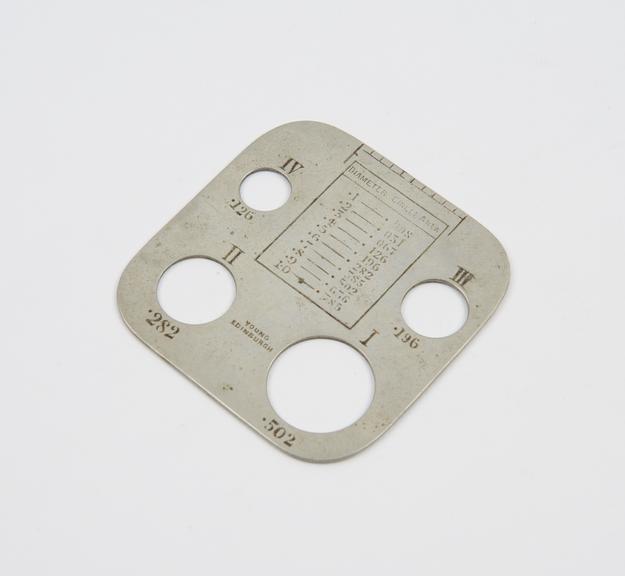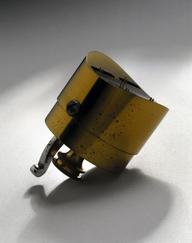





Smallpox pustule (or vesicle) gauge used to estimate the duration of immunity imparted by vaccination, by Young, Edinburgh, Scotland, 1870-1930
It’s 1873, and you’ve just moved to London from the small country town where you grew up. The trouble is, you were never vaccinated against smallpox. Are you at risk? There is no telltale scar anywhere on your arm and no record of it being done – and it’s the law! Besides, since the epidemic of 1871 – which killed 50,000 people – your father has changed his anti-vaccination views.
Once your local vaccinator has scratched the smallpox vaccine into your arm he might use this instrument. What’s it for? It’s a smallpox pustule gauge, made to measure the size of the reaction that should appear on your arm in a few days. If the vaccination is a success the effect will be significant, with fierce inflammation and a pustule that measures up well against the gauge’s larger circles. But if the response is small, it’s likely that the vaccine has not worked properly. You might be unprotected and need a second vaccination.
How did you avoid vaccination if it was made compulsory in 1853? As vaccination usually accompanied birth registration, many objecting parents simply didn’t register their children. Opposition was intense. Vaccination was a painful and occasionally deadly process, considered medically unproven by some and state intrusion by others.
Were there other ways to protest? Local pressure groups and a National Anti-vaccination League fought the legislation. Rallies and public demonstrations were common. But since your father’s change in views, he would have missed the giant parade in Leicester in 1885, when up to 100,000 people marched with an effigy of Edward Jenner, the father of vaccination, which they hung and then decapitated.
Details
- Category:
- Public Health & Hygiene
- Collection:
- Sir Henry Wellcome's Museum Collection
- Object Number:
- A600038
- Materials:
- metal (plated)
- Measurements:
-
overall: 1 mm x 62 mm x 63 mm, .02kg
- type:
- pustule gauge
- credit:
- Hutchinson, J.R.




